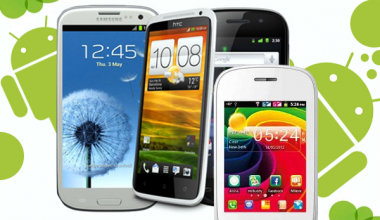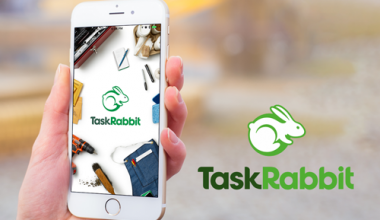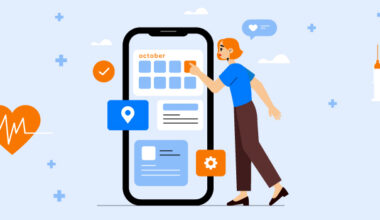I’ve been looking at, discussing, and writing about the Apple iPad for a while now. My time with the tablet got me thinking: Microsoft and its partners need a rapid course correction if they’re going to compete with Apple in the tablet race.
The questions about whether or not Apple could produce a compelling tablet have been answered. PCMag gave it an Editors’ Choice award, and most other reviews have been positive to glowing. Yes, there are still some big questions about the iPad. Will consumers embrace it after the initial rush? Will publishers’ dreams of the “iPad as industry savior” be realized? I’d say we’re 6 to 12-months away from being able to answer those questions. Even so, Apple’s iPad is a tablet done right, and I think Apple’s plan of using and extending its mobile OS in ever-larger devices is pure genius and one that Microsoft would do well to mimic.
Right now, we’re all waiting for Windows 7-based tablets, such as the HP Slate, to arrive. There will be others, of course, but HP’s is the one Microsoft is touting. It appears to have the most potential for rebooting Microsoft’s tablet PC efforts. It’s built on the Windows 7 platform—a desktop and laptop OS that I use every day. It’s the best version of Windows since, perhaps, Windows 95. By that I mean that it’s new, fresh, smart, and light enough and intuitive enough to not get in your way.
All that said, it’s still a desktop OS. It carries with it all of the complications that are typically associated with running a relatively complex piece of technology. For what it’s worth, Apple’s desktop OS, Mac OS X, is only marginally less complex. This has relatively little to do with the hardware. We’ve proven in PC Labs that netbooks (which have hardware specs that are roughly equivalent to the upcoming Windows tablets), can run Windows 7, but Windows still shows you too much about the guts of your system. You still install drivers, there’s still a Control Panel, and even the nifty new Device Stage leads you to a hardware setup or configuration screen eventually. Windows Phone 7, like the iPhone OS, shields the end user from those complications. If Microsoft and its partners put Windows Phone 7 on these tablets, an end user might never have to see any of them. Yet, with access to the new Microsoft Marketplace, they’ll still be able to install whatever apps they need—all from one central place. Clearly, Microsoft has a lot of ground to make up in the Marketplace—it’ll have to get much richer and faster if Microsoft wants people to rely on it for their Win Phone 7 app needs. Web-based offerings could help here. Microsoft’s Office Web Apps, for example, could be the perfect tools for these Windows Phone 7-based tablets.
Before someone goes for my throat, let’s define some terms. Tablets is, admittedly, a broad term, and there’s a lot of confusion about what is and isn’t a tablet computer. For the sake of my argument, I do not consider products like the Apple iPad and HP Slate full-blown computers, and, while versatile, they’re not suited for all computing tasks. I don’t think video editing, intensive photo editing, and CAD work are what you want to do with them. Laptops that convert into tablets are, essentially, full-blown PCs stuffed with powerful, near-desktop-level (sometimes desktop-level) components. They’re ready to do virtually anything. All-in-one touch-screen desktops, such as the HP TouchSmart, are not tablets.
If you accept my argument—that true tablets need to work more like mobile phones and less like desktop computers—then Apple’s iPad strategy makes perfect sense. The astounding market success of netbooks helped Apple realize that most people only want to do a limited number of things with their computers. But Apple CEO Steve Jobs was loath to deliver a low-end portable computer to the market. Obviously, he figured out that Apple could serve the netbook market, with a product that’s sexier, simpler, and yet more powerful than many low-end netbooks. The iPhone and iPod touch are incredibly human devices that respond to your actions in an almost instinctive way. It’s not much of a leap to surmise that this think/do interface metaphor could also work in a form factor just shy of a full-blown laptop. There are more facets to the iPad than simplicity, but the choice of the iPhone OS as the iPad platform is probably the most important decision Apple made in the entire product development process.
Putting what is, essentially, a mobile OS into, for example, the HP Slate should be easy to do. It would allow Microsoft to replicate the Apple ecosystem’s success (i.e. the iPad, iPhone OS 4, iTunes, the App Store, and individual apps). Obviously, Microsoft doesn’t manufacture and control Windows Phone 7-based hardware the way Apple does its own hardware. That said, Microsoft is requiring certain key features in all Windows phones: GPS, touch screen capabilities, and an accelerometer. Now, Microsoft should extend that concept to tablets running its software (if it doesn’t already).
One company that may agree with my strategy is Google. I’ve heard more than a few rumors that the company is working on a tablet with its Android mobile platform—not its Google Chrome OS. This isn’t exactly a surprise. Other companies, including Dell, are thinking the very same thing.
I know this is a radical idea, but if Microsoft and its partners hinder these new tablets with a full-blown OS and the standard world of ad-hoc Windows applications and utilities bought from non-homogenous sources, Apple and the iPad will win.
Resource:
http://www.pcmag.com/article2/0,2817,2362882,00.asp




